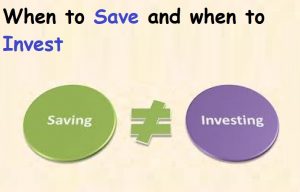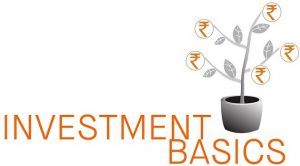Most often people don’t seem to comprehend the difference between saving money and investing money. Both of these have different objectives and serve different purposes in anyone’s financial strategy.It is important to clearly know and understand the fundamental concept of saving and investing before you start building your wealth to meet your financial goals because it can save you a lot of confusion and tension that you might face later.
Savings
Saving money or savings is the process of accumulating cash and keeping it in a safe place where it is readily and easily accessible as liquid cash. It is very important to have sufficient amount of cash reserves that is immediately reachable and with minimal to meet any emergency.
Investing
Investing money (or investments) is the method of using your money to buy an asset or financial product that has the capability of generating a good rate of interest (earn more money) over time. Investments thus make you wealthier. Some of the most common investments are stocks, mutual funds, bonds, gold, and real estate.
When to save and invest and how much to save and invest?
Savings is the first step and so it should obviously come before you start investing your money. Savings is the foundation for building your financial dreams and goals. This is because, unless you already have a huge amount of wealth, you have only your savings to start your investments.
Now that we know clearly that we need to save first before we start investing, question is how much should you save and invest.
To keep it simple, you should make sure to save an amount that is sufficient enough to cover all your expenses, including your food, clothing, house rental/ home loan payments, other loans, utility bills, and all other basic expenses for at least six months. This will help to cover any kind of unexpected events such as medical emergencies or if you happen to lose your job. This amount will provide you with sufficient liquid cash and also give you the time to adjust to your current situation with less stress.
You should also keep in mind that any specific need in your life that requires a large amount of cash in less than or equal to five years should be in your savings list and not in your investment list.
Once you have covered all the above and also have a good health insurance, you can start investing your money in short term and long term investments based on your goals and needs. Once you have covered the basics of savings, there is no cap on how much you can invest. However, it is better to limit your exposure to high-risk investments once you near your 50s or retirement.
One exception to the above rule for investment is investing in NPS (National Pension Scheme) apart from your PF (or any other employer-provided pension scheme). This is because it not only gives you an additional tax rebate but also helps to accumulate money for your retirement corpus in a systematic manner.
To know more about how much you actually need to save and to make the right choice of investment, get in touch with your financial advisor.




